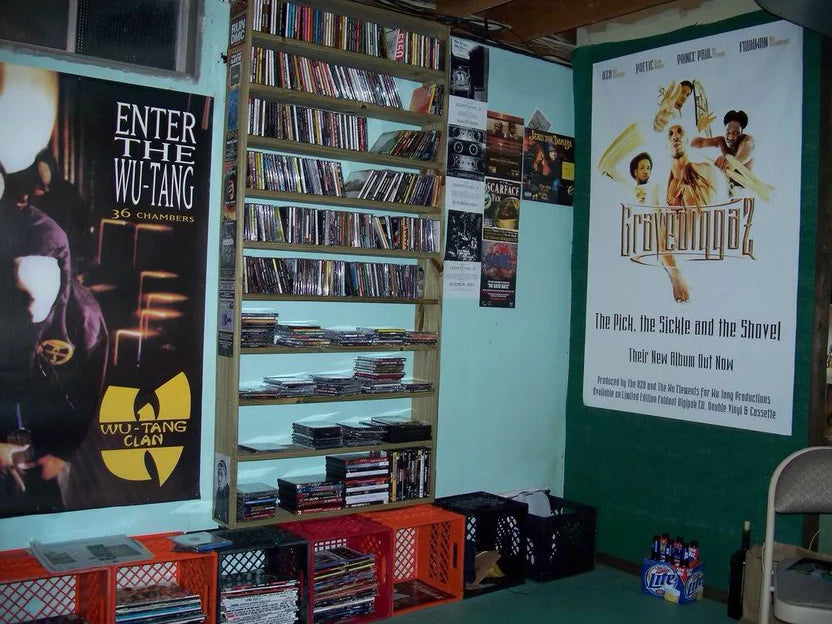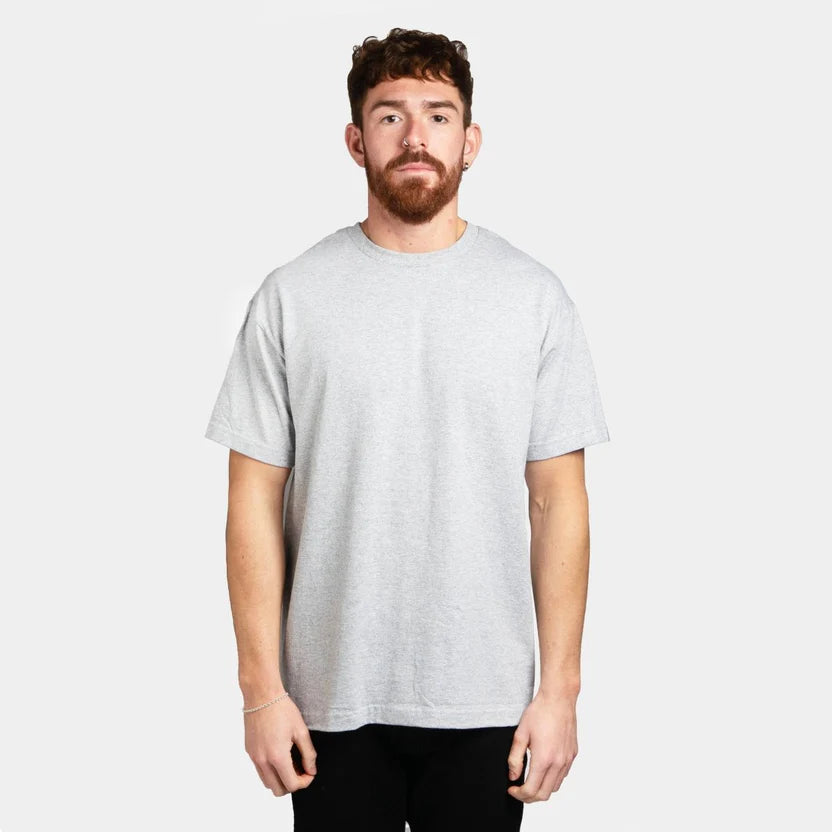When is The Right Time To Start Merchandising?
Merchandising is a crucial aspect of any business strategy, but determining the right time to start can be a challenging decision. Merchandising involves planning, promoting, and selling products or services to maximize their appeal to customers. It's the art of presenting your offerings in a way that not only meets the needs of your target audience but also entices them to make a purchase. This includes everything from product placement and pricing to visual displays and marketing efforts.
Merchandising plays a vital role in the success of a business. It serves as a bridge between your products or services and your customers, making it a powerful tool for revenue generation. Effective merchandising can boost brand awareness, drive sales, and create loyal customers. Now, let's dive into when to start merchandising based on your business's growth stage.
Early Business Stages
The timing of when to start merchandising can vary depending on the stage of your business. Let's explore when it's most appropriate to begin this strategic practice for startups and small businesses.
Startups
For startups, the right time to start merchandising often coincides with the early stages of building your brand identity. Before diving into marketing and sales, it's crucial to establish your brand's core values, mission, and unique selling propositions. Once you have a solid foundation, you can align your merchandising efforts with your brand's identity to create a consistent customer experience.
Understanding your target audience is another critical aspect of merchandising for startups. You need to identify who your potential customers are, what they value, and how your products or services can meet their needs. This knowledge will inform your merchandising strategies, helping you connect with your audience effectively.
Small Businesses
For small businesses that have already launched their products or services successfully, the right time to start merchandising comes shortly after this initial success. Once you've proven demand for your offerings, it's time to optimize your merchandising efforts to capitalize on this momentum.
As a small business, establishing a strong market presence is essential. Merchandising can help you solidify your position in your industry by showcasing your products or services effectively. When you're ready to expand your customer base and compete more aggressively, it's a good time to invest in merchandising.
Growth Indicators
To determine the right time for merchandising, it's essential to look for growth indicators within your business. Let's explore two key indicators: increased demand and expansion opportunities.
Increased Demand
One of the most obvious signs that it's time to start merchandising is increased demand for your products or services. Monitor your sales trends and customer demand carefully. When you see consistent growth, it's a clear signal to ramp up your merchandising efforts to meet this demand effectively.
Listening to customer feedback is invaluable. Suppose you consistently receive positive feedback, and your customers desire more products or services from your business. In that case, it's a strong indicator that you should start merchandising to expand your offerings and cater to their needs.
Expansion Opportunities
Merchandising can also help you identify and tap into new markets. If you've done your market research and discovered untapped customer segments or geographical areas where your offerings could thrive, it's time to start merchandising for expansion.
When you have a successful product or service and see opportunities to expand your product line to meet different customer needs, merchandising becomes a crucial tool for introducing these new offerings to your existing and potential customers.
Competitive Landscape
Understanding the competitive landscape is crucial when deciding to start merchandising. Let's delve into how to analyze competitors and assess your financial readiness to stay competitive in the market.
Analyzing Competitors
Before embarking on your merchandising journey, thorough market research is essential. Analyze your competitors to gain insights into their strengths and weaknesses. Identify their target audience, pricing strategies, and marketing efforts. This information will help you formulate a merchandising plan that sets you apart.
To stand out in a competitive market, you must develop differentiation strategies. Explore ways to make your products or services unique, whether it's through innovative features, exceptional quality, or exceptional customer service. Effective merchandising should highlight these differentiators and showcase why customers should choose your offerings over the competition.
Industry Trends
Merchandising is not a one-time effort but an ongoing process. To stay ahead in your industry, regularly review your merchandising strategies and make necessary adjustments. Keep an eye on emerging trends and consumer preferences, and be ready to incorporate these into your merchandising approach to remain relevant.
Industries are constantly evolving, and successful businesses adapt accordingly. When industry shifts occur, your merchandising strategy should be flexible enough to accommodate these changes. This might involve updating your product offerings, marketing channels, or pricing strategies to align with the evolving market landscape.
Financial Readiness
Ensuring your business is financially prepared for merchandising is crucial for its success. Let's examine profitability and investment capacity as key financial aspects to consider.
Profitability
Before diving into merchandising, assess your business's revenue stability. Merchandising can be resource-intensive, so it's essential to have consistent income streams. If your revenue fluctuates significantly, focus on stabilizing your business's financial health before allocating resources to merchandising efforts.
Understanding your profit margins is critical when considering merchandising. Evaluate the profitability of your products or services to determine if merchandising can enhance your bottom line. If you have high-margin products, merchandising can boost your profits effectively.
Investment Capacity
Determine the costs associated with your merchandising efforts. This includes expenses such as product design, packaging, marketing, and distribution. Ensure you have a clear understanding of these costs and how they will impact your overall budget.
Consider the potential return on investment (ROI) of your merchandising efforts. Calculate the expected revenue from your merchandising activities and compare it to the costs involved. A positive ROI indicates that your business is financially ready for merchandising, while a negative ROI may require further financial preparation or adjustment of your merchandising strategy.
Operational Efficiency
Supply Chain
Efficient supply chain processes are vital for merchandising success. Ensure your supply chain operates smoothly, from sourcing materials to product distribution. Streamline workflows, reduce bottlenecks, and optimize logistics to minimize delays and ensure timely merchandise availability.
Effective inventory management is essential to prevent overstocking or understocking of merchandise. Implement inventory tracking systems and employ demand forecasting to maintain optimal stock levels. This will help you meet customer demand while reducing carrying costs.
Team Alignment
Invest in training and skill development for your team members involved in merchandising. Equip them with the knowledge and tools to execute your merchandising strategy effectively. This includes understanding customer behavior, market trends, and merchandising best practices.
Promote cross-functional collaboration within your organization. Encourage communication and cooperation between departments like marketing, sales, and product development. A unified team approach ensures merchandising aligns with overall business goals and brand strategy.
Branding Strategies
Consistent Messaging
Building a compelling brand image is the cornerstone of effective branding. Suppose you're selling wholesale snapback hats, you need to establish an image that resonates with your target audience. Consider factors such as the style, quality, and unique features of your hats. Craft a message that highlights these attributes and positions your brand as a trusted source for stylish and high-quality headwear.
Storytelling is a powerful tool for creating a connection with your customers. You can tell stories about the inspiration behind your designs, the craftsmanship that goes into each hat, or the communities and lifestyles your hats cater to. By weaving these narratives into your branding, you can engage your audience deeper and create a lasting impression.
Visual Identity
Your logo and design elements play a crucial role in visual branding. Ensure these elements are consistent across all merchandising materials, from product packaging to marketing collateral. A recognizable logo and design create a strong visual association with your brand.
The aesthetics of your product packaging are an integral part of your visual identity. Invest in appealing packaging designs that reflect your brand's personality and resonate with your target customers. Well-designed packaging not only protects your merchandise but also serves as a powerful marketing tool.
Summary
Determining the ideal moment to start your brand merchandising journey involves considering several key factors. First, evaluate your business stage, whether you're a startup building brand identity or a small business seeking to expand its market presence. Keep a close watch on growth indicators like sales trends, customer feedback, and industry competition to identify signs of increased demand and expansion opportunities.
Assess your financial readiness by analyzing revenue consistency, profit margins, and investment capacity. Streamline your operations for efficiency and establish a strong brand with a consistent message, compelling storytelling, and a distinct visual identity. By methodically assessing these elements, you can make a well-informed decision about the right time to initiate merchandising, aligning it with your business's growth and readiness for maximum success.













